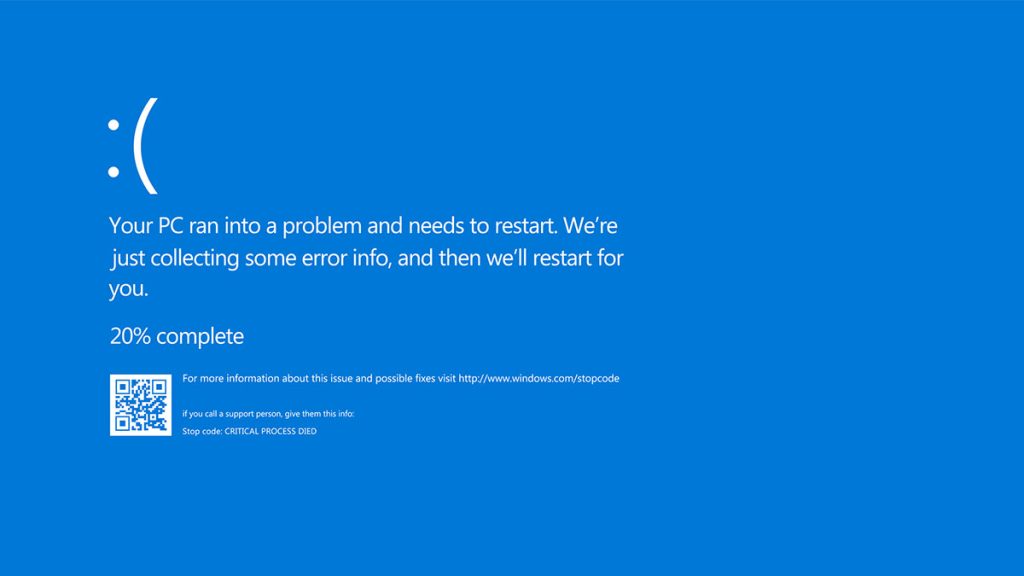What is the true cost of IT downtime?
In today’s digital age, IT infrastructure is the backbone of any successful business. And when IT systems go down, it can bring normal business operations to a grinding halt, resulting in significant financial losses and reputational damage.

Understanding the true cost of IT downtime is crucial for UK businesses to proactively implement measures to prevent and mitigate its impact.
In this article, we’ll explore:
- The definition of IT downtime
- The main causes of IT downtime
- Direct financial losses from IT downtime
- How employee productivity is affected by IT downtime
- Reputational damage as a result of IT downtime
- How you can mitigate downtime risks
What is IT downtime?
IT downtime occurs when your network, connected devices or website cannot complete their primary functions. This can be caused by a variety of factors, including:
- Unplanned events: These are unexpected outages that can be caused by hardware failures, software glitches, power outages, natural disasters, or human error.
- Planned events: These are scheduled outages that are necessary for maintenance, upgrades, or security patches.
Sometimes a system operates slowly or is only partially available. For example, slow-loading web pages, under-performing apps and an unstable internet connection. The impact of these scenarios won’t have the same impact as a complete outage, but they can negatively impact productivity and profitability in a business.
What are the main causes of IT downtime?
When we think about IT downtime today, often the first thing that comes to mind is a cyberattack, usually ransomware. A survey* of 6,200 IT managers and IT users confirmed that 36% had experienced downtime as a consequence of cybercrime. However, cybercrime isn’t the only or even the main threat.
The survey showed these factors were also to blame for unplanned downtime:
- System crashes: 52%
- Human error: 42%
- Insider attack: 20%
IT downtime can also result from software and hardware failure and natural disasters, as we covered in our previous article, ‘Backups and disaster recovery – is your business ready for the worst-case scenario?’.
* Acronis Cyber Protection Week Global Report 2022
Direct financial losses from IT downtime
The most immediate and tangible impact of IT downtime is the loss of revenue. Every minute that systems are unavailable represents lost sales opportunities, customer transactions, and productivity.
The impact of IT downtime can vary depending on the size and industry of the business. For example, a small business with a limited online presence may not experience as much lost revenue as a large ecommerce company.
The average cost of IT downtime in the UK is about £4,000 per minute, and 98% of businesses claim that a single hour of downtime costs over £80,000.
Source: Gartner
For larger businesses, downtime can translate into millions of pounds lost each year. According to a study by Veeam, the average cost of IT downtime for SMEs in the UK is £3.6 million per year. This figure includes not only the direct costs of downtime but also the indirect costs. Here is a breakdown:
- Lost revenue: £2.4 million
- Lost productivity: £600,000
- Damage to reputation: £300,000
- Repair costs: £300,000
How employee productivity is affected by IT downtime
When IT systems are down, employees are unable to access essential tools and resources, leading to a significant drop in productivity. Even a brief outage can disrupt workflows, hinder communication, and delay project completion.
A study by the Uptime Institute found that 82% of employees reported feeling stressed or frustrated when IT systems are down. There are many ways in which IT downtime can impact staff morale:
- Frustration: When employees are unable to access the tools and resources they need to do their jobs, they can become frustrated and unproductive. This frustration can be exacerbated if employees feel like their concerns about IT downtime are not being addressed.
- Stress: IT downtime can be a source of stress for employees, especially if they are under pressure to meet deadlines. This stress can lead to burnout and decreased job satisfaction.
- Boredom: If employees are unable to work productively, they may find themselves feeling bored and disengaged. This can lead to a decrease in motivation and a decline in work quality.
- Isolation: IT downtime can disrupt communication and collaboration among employees, which can lead to a sense of isolation. This isolation can make employees feel disconnected from their colleagues and their work.
- Feelings of worthlessness: In some cases, IT downtime can even lead to employees feeling like their jobs are not valued – this can be particularly damaging to morale if employees feel like their contributions are not being recognised
Reputational damage as a result of IT downtime
IT downtime can also have a detrimental impact on a company’s reputation. Customers who are unable to access products or services may quickly switch to competitors, leading to lost customer loyalty and brand erosion.
And in today’s hyperconnected world, negative news about IT outages can spread rapidly through social media and online reviews, further tarnishing a company’s image.
The hidden costs of IT downtime
In addition to the direct financial losses and productivity impacts, there are also hidden costs associated with IT downtime. These can include:
- Recovery costs: The expenses incurred in restoring IT systems, websites, apps, and data after an outage, such as hiring IT specialists or paying for data recovery services
- Customer support costs: The increased strain on customer support teams as they deal with frustrated customers unable to access products or services
- Legal fees: The potential for legal costs if customers suffer financial losses due to IT downtime
How you can mitigate downtime risks
To protect against the substantial costs of IT downtime, your business should implement proactive measures to prevent outages and minimise their impact. These measures should include:
- Invest in robust IT infrastructure: Ensuring that hardware and software are up-to-date and secure can help prevent system failures
- Be proactive, not reactive: A monitoring and management service like RAD 24/7 that includes regular maintenance, software updates, security patches, and other forms of preventative maintenance can significantly reduce the risk of IT downtime
- Implement regular backups: Regularly backing up data ensures that critical information is not lost in the event of an outage
- Establish disaster recovery plans: Having a plan in place for how to restore IT systems and data quickly can significantly reduce downtime. Read our article for more details: Backups and disaster recovery – is your business ready for the worst-case scenario?
- Conduct regular IT audits: Regularly assessing IT systems for vulnerabilities and potential risks can help identify and address issues before they cause an outage
- Having a reliable IT support provider: Managing your IT infrastructure takes time, specialist skills and a deep level of knowledge, especially in today’s world, so it’s essential to have round-the-clock support from IT specialists like RAD
- Educating employees about IT security best practices: Your employees are often the first line of defence against cyberattacks, constantly under the barrage of social engineering attempts, so it’s vital to offer IT security training and education to all your staff
Protect your business against IT downtime today
By understanding the true cost of IT downtime and taking proactive steps to mitigate its impact, you can protect the financial well-being of your business, maintain customer satisfaction, and safeguard your reputation.
Contact one of our IT experts to discuss how we can help prevent unplanned downtime in your business.
-
Hiring a technology consulting partner – best practices
Hiring a technology consulting partner – best practices If you’re considering... -
How to get ROI for your website
How to get ROI for your website In today's competitive online... -
Cybersecurity, cloud and automation – predicting IT budget spend in 2024
Cybersecurity, cloud and automation – predicting IT budget spend in... -
What is the true cost of IT downtime?
What is the true cost of IT downtime? In today's digital... -
Backups and disaster recovery – is your business ready for the worst-case scenario?
Backups and disaster recovery – is your business ready for...





